- Getting around Lijiang. Dont stay in the Old Towns more than 2 days, there is nothing to do. KRISS Oct 9, 2013 05:46
- 2013 Beijing Temple Fair BENNYLAU Feb 26, 2013 03:29
- Malaysian traveling from KUL - LAX vis Shanghai PVG ZATI_DY Jan 3, 2013 20:15
Northern Gateway of the Hidden Sanctuary
- Views: 7014
- |Vote: 1 0
- |Add to Favorites
- |Recommend to Friends
Adventures in a Snow-Bound Land
We were faced with the kind of dilemma that die-hard travelers are loathe to accept: a long weekend break from work and no place to go.
The especially challenging thing about the long-weekend-from-work when you live in the northern climes is that in the dead of winter, anywhere warm is too far to travel in 3 days, and anywhere nearby you’ve either A) been to already or B) you don’t fancy turning to an icicle while all other intelligent life-forms hunker down in their homes and keep warm.
Yes, it was a dilemma. But luckily one that was happily resolved by the endless cornucopia of diversions that is Ji Xian: The Hidden Sanctuary.
Tianjin and Beijing, Ji Xian’s neighboring metropolis meccas, had just been slathered in two and a half days of snow. It was cold, but it was beautiful. And there’s only one thing on this planet that most people don’t often get to see covered in snow:
The Great Wall.
Getting There
Yes, we’d seen it in postcards. As had any tourist who bought the souvenir postcards from the street-hawkers in the sunny heat of leafy-green summer. But we weren’t satisfied with postcard-traveling. This was a chance that couldn’t be passed up and we knew the snow wouldn’t last for long: we had to see it for ourselves.
But not just any hunk of slithering, snaking, snow-dusted Great Wall. We were headed for the one and only, the Impregnable Pass of the Northern Gateway: the Huangyaguan Great Wall.
So I boarded a tiny gurgling bus bound for Ji Xian from Tianjin’s northeast bus station and cozied up for the deceptively long 3-hour bus ride. It’s one of China’s lasting mysteries to me: it seems that even though drivers’ feet are magnetically attracted to the full-throttle metal of the accelerator, slaloming Pekabo Street style around any obstacle, and even with a mere 110 kilometers of ground to cover between destinations, journeys are always upwards of calculated travel time. But there’s no complaining from me: I had a front seat and a driver’s-eye view of the snow-dusted mustard- and gold-colored fields. The late morning sun was dancing off the black bones of trees, casting them in stark relief to the glittering fields and slate-hued houses.
My friend had a similar plan: she boarded an even smaller bus from one of Beijing’s bus stations. Only her ride was half the travel time of mine (mileage: 88 kilometers; 22 kilometers less than my trip and an hour and a half shorter….The Mystery prevails). We met at the bus station in Ji Xian and hailed one of the ubiquitous moto-taxis and, for a paltry fare, headed to the Yi Yuan Hotel, the hotel that most locals think foreigners will want to stay at.
Base of Operations: Ji Xian
To my disappointment, the Yi Yuan Hotel wasn’t quaint or old-style in the small-town way I had hoped. It was uncharacteristically huge, drafty, and ugly. A simulacrum of rooms down endless corridors: brown furniture, dreary carpeting, white bedspreads, faint stale-smoke smell, suspect bathroom cleanliness. But each clone-room was warm and the bedspreads surprisingly clean and comfortable. We’d have to seek our ambiance elsewhere.
Which wasn’t a problem. Though Ji Xian is a burgeoning crossroads town, it is still small and easily laid-out. The giant stone Drum Tower sits at the crosshairs of the city and most everything else radiates within walking distance. The Yi Yuan hotel bulges north and east of the Drum Tower atop a modest hill that ranks high on the treachery-scale when covered in slick snow and ice. We began and ended every excursion from the axis of the Drum Tower, an easy landmark of Ji Xian’s budding cultural center.
The square around the Drum Tower is a painted panoply of shops, restaurants, and KFC. Street-vendors, enveloped in plumes of steam from their goods, push out local fare, including tiny wet-fuzzed chicken embryos curled up penitent-style in a mysterious brown blurbling liquid. Cars don’t frequent the square, which makes for pleasant walking, though the moto-taxis whip around with constancy. The Drum Tower’s western arm is pedestrian-only, and the most important avenue for reaching sites-of-interest, including cheap passage to the Great Wall and the quietly famous Dule Si: the Temple of Solitary Joy.
Passage to the Impregnable Pass
The next morning we awoke in a mood that befits a pair who are ready to take on the Impregnable Pass. The sun was glittering off icicles and boughs, the sky was blue and crystalline, the air was cold and fresh. Just one question remained: how do we get there?
The Great Wall at Huangyaguan is approximately 25 kilometers north from the town of Ji Xian. It is at the northernmost edge of Ji Xian County, a picturesque pinch of land that has high cliffs and steep mountain flanks. At the bottom of the valley, where the parabola of Great Wall dips, there is a small river that, judging by the construction of the ramparts of the Wall, used to be much larger. The cliffs glow gold in the sunlight, high and cragged, thus aptly named Huangyaguan: Yellow Cliff Pass.
We inquired at the front desk of our tourist-trap of a hotel, assuming that their business must be heavily involved with visitors getting to and from the Great Wall.
We assumed wrong.
Never have I known a hotel staff to be so incredibly ignorant of the services for tourists within their community. When I asked the front desk lady how we can get to the Great Wall, she told me that there wasn’t a good way to get there. There are no buses, only taxis. When I asked how much they cost, she said it would set me back around 200 RMB.
I choked. Excuse me? Don’t joke with me, I pleaded. But she, avoiding eye contact with me, told me that it was so. I chortled and we left the hotel. We’d head to our crossroads, the Drum Tower square, and see if we couldn’t find a more suitable answer to our inquiry. As we wandered around looking for some breakfast and a hot drink, we kept our eyes out for someone in-the-know. And, not surprisingly, the first woman that we asked told us that just beyond the Dule Si, at the end of the street that stretches westward from the Drum Tower, you can find several mini-buses that go to all the sites in Ji Xian: the Great Wall, Pan Shan, Jiu Long Shan, etc. (see previous articles: The Hidden Sanctuary, part 1 and part 2).
We sauntered down to that corner and several drivers approached us. We negotiated a very cheap price of 8 RMB per person to be driven to the Great Wall. They immediately bundled us into their little van and set out along the snaking, countryside roads of Ji Xian County.
In the Nook of the Mountains
The Huangyaguan Great Wall, the Northern Gateway of the Yellow Cliffs, is an angular slice of land situated in the remote attitude of protection. Two sections of wall peal away from a small walled fort and outlying village that lie on the west bank of the river. The Huangyaguan Wall was first built in the Northern Qi Dynasty, over 1400 years ago, and then redone in the Ming Dynasty. The original length of the Wall at this section stretched 42 km (26 miles), but after it was restored in 1987 for visitors, a fraction of that mileage was cut off. However, it still remains the longest section of restored wall that visitors can access and, since the year 2000, has been the site of the renowned Great Wall Marathon.
Unlike other sections of the Great Wall, there’s more to Huangyaguan than just traipsing along the dragon-esque swoops of stone. Since 1987 the old walled fort, called GuanCheng, or Pass City, has been converted into a series of museums and cultural sites that are enrapturing and further add to the aura of time-teleportation into the ancient world of Chinese history. There are also two large watchtowers that can be accessed along the Wall: one that is part of it and one that sits mid-valley.
The mid-valley tower was used as a fire-signal tower that alerted the Fort and its protectors to approaching enemy activity. The other tower, named Guafu Tower, or Widow’s Tower, was built in the Ming Dynasty by a handful of soldiers’ widows who donated their deceased husbands’ pensions to its construction in order to honor their names and further prevent the widowing of other soldiers’ wives. It is from this tower that the most stunning views of both sections of the wall, the Fort of GuanCheng, and the valley can be seen.
The Labyrinth at BaGua
GuanCheng is laid out like a miniature walled-city, a series of four long-houses positioned perpendicularly to border inner courtyards in the traditional Chinese layout. At the southwest corner of the Fort lies a Labyrinth called Bagua Village. Constructed according to the Eight Diagrams (BaGua) of Fuxi, visitors can spend their time winding through the maze, twisting upon themselves until they find that enlightened path to the raised platform at the center of the labyrinth. From there one can watch as their friends navigate the switchbacks or they can contemplate the best route for getting out of the labyrinth…getting in is only half the journey. For us, it was a little easier than for most: like skilled wilderness trackers, we just followed the most trodden path through the snow filled passages.
The Great Wall Museum
There are three other sites of interest within GuanCheng: the Great Wall Museum, the Longevity Garden, and the Stele Forest of One Hundred Generals’ Calligraphy. The Great Wall Museum is the only museum of its kind to display and recount the entire history of the Great Wall; all of its current sections open to visitors in China; interesting relics collected from different ages of construction of the Great Wall; tales of the Emperors who commissioned different parts to be built; the unification of the Wall; and several maps that detail the Wall and its locations and importance throughout the whole of China.
The Longevity Garden
The Longevity Garden boasts a breathtaking display of one Chinese character, the character for “longevity” written hundreds of thousands of times, in hundreds of different scripts that span the ages. It is good luck and good fortune, which brings Longevity, to sit within and amongst the carved characters and contemplate their meaning, their different components and their style of writing. At the back of the garden one can sit on the Throne of Longevity and overlook the entire display before him, a venerated position sure to bring long life and happiness.
Calligraphy Forest
The Stele Forest of One Hundred Generals’ Calligraphy is, I’m afraid, difficult to appreciate if you haven’t been schooled in Chinese script. For the Chinese however, it’s a fascinating representation of the writing, thoughts, and words of some of the greatest, the famous, and the infamous leaders in Chinese history. In the center of the courtyard is a grand statue of young Mao—with a full head of hair!—looking off into the horizon. Facing him, visitors can see just behind him to the left and the right two large plaques of Mao’s handwriting, which evolved in its reputation from being poor penmanship to one of the most stylish and reverential. Off Mao’s left shoulder, one can gaze upward and see a slithering portion of the Wall high on a mountain-top.
Though the words themselves within the Calligraphy Forest may be lost on many visitors, the overall effect of the place is striking and fascinating. If one can’t bear to miss out on the messages behind the scrawling poetry of China’s generals, a guide can be hired at the ticket booth of the Great Wall.
The Wall and the Cliffs
After wandering through the Fort-city of GuanCheng, it’s time to climb the ramparts to the wall itself and decide which portion to ascend first. The Wall on the same side of the river, the Huangyaguan portion, is easier to navigate with more level footing, though it has long flights of stairs and steep pitches. The Wall to the east, called Taipingzhai, extends farther over more crests of hillside, branching into different strategic arms. The east section is steeper and narrower with cobblestone-like footing, but the views after cresting each summit of wall are incredible. The Wall of Taipingzhai ends abruptly, dissolving into one of Huangyaguan’s famous yellow cliffs, glowing emperor-gold in the late-afternoon sun.
Dusk
Though the surrounding hills were brown from the barren winds of winter, the glittering white snow lapping the edges and folds of the Great Wall lit its long meandering path along the hillsides, making every traverse a stunning vista.
As we descended the Wall at dusk, the problem of getting back to Ji Xian arose. We wandered back towards GuanCheng but, as it was getting late, there were few people around. We hailed a family in one car, who told us that it would be difficult for us to find a ride from there. They offered to let us cram into their little vehicle and they’d take us to the place where we’d most likely find a ride. We were overjoyed at not having to walk in the growing darkness, awed again at the kindness of strangers, and true to their word, they dropped us at a shop a few kilometers up the road where several mini-buses were stationed. Negotiating the price to get back ended up more expensive than getting there, but we didn’t mind. It was still a cheap fare, at 13 RMB a person, for a ride back to town.
Information
Getting There:
to Ji Xian: buses leave 4 times daily from Tianjin's North East bus station. 25 RMB.
buses leave every hour from Beijing. 25 RMB.
trains from Tianjin leave for Ji Xian every morning at 7:20 and depart
every evening at 7 to return to Tianjin. 30 RMB
from Ji Xian: buses leave for Beijing and Tianjin regularly. Ask outside the bus station.
25-35 RMB.
to Huangyaguan Great Wall: find mini-buses for hire at the far end of the Drum Tower's western street. 8-15 RMB per person.
Entrance fee to Guangcheng Fort and Great Wall (all inclusive): 40 RMB
Return from Wall to Ji Xian: depends on the time of day and availability. Ask around for a ride, prices will range from 10-20 RMB.
Yi Yuan Hotel: 150 RMB per night for double room with private bath and TV. When you inquire about the rate, ask for a discount "da zhe" and they will quote the 150 RMB price.
Cheaper fares can be found at other hotels. Do NOT pay more than 150 RMB per night.
I do not recommend seeking any sort of advice from the staff at Yi Yuan Hotel. There is nothing in the town of Ji Xian, especially transport or accomodation, that you should pay over 200 RMB for. If a driver quotes this kind of price to you, tell him to b*gger off.




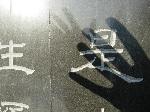
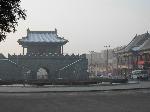
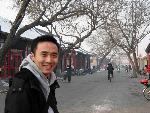
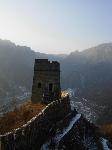
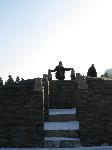
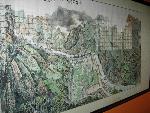

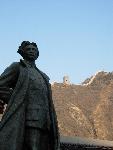
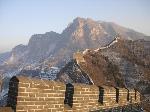

 Copyright © 1998-2024 All rights reserved.
Copyright © 1998-2024 All rights reserved.
1.
May 7, 2007 22:36 Reply
FAISAL said:
I love the way you wrote and the using of words in the traveling blogs.
2.
Feb 26, 2007 21:20 Reply
CHRISWAUGHBJ said:
八卦 is usually translated as Eight Trigrams, not Eight Diagrams. Just being pedantic, sorry.